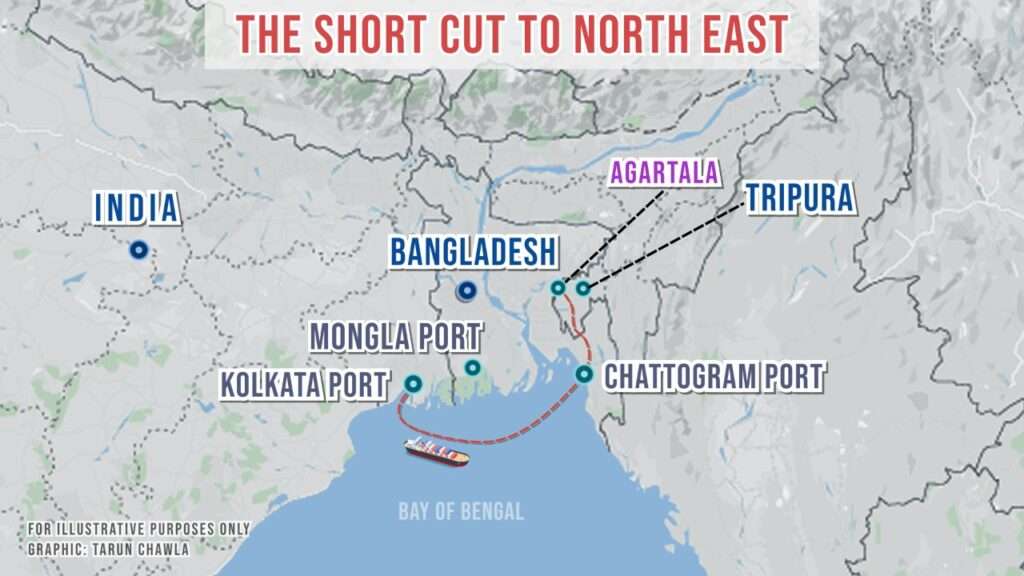In a landmark move aimed at bolstering regional connectivity and national security, the Indian government has unveiled plans for a new maritime link connecting the northeastern states to Kolkata via sea, strategically bypassing transit through Bangladesh. The initiative marks a significant shift in India’s logistics and trade policy concerning the northeast corridor.
The proposed route will leverage the Brahmaputra River and Barak River systems, integrating them with coastal shipping routes along the Bay of Bengal. The multi-modal transport project is part of India’s broader Act East Policy and aligns with the government’s goal to enhance infrastructure in the strategically sensitive northeastern region. It is expected to reduce dependency on foreign transit and improve resilience in supply chain logistics.
Key stakeholders have emphasized the economic and strategic implications of the development. Union Minister for Ports, Shipping and Waterways, Sarbananda Sonowal, noted that the project is designed to “unlock the commercial potential of the northeast” and “create a direct corridor for cargo movement to mainland India.” Currently, a large volume of goods from the northeast passes through the Siliguri Corridor — often referred to as the ‘Chicken’s Neck’ — a narrow stretch of land vulnerable to disruption.
Experts view the move as both a logistical advancement and a geopolitical maneuver. India has long relied on protocols with Bangladesh for transshipment of goods from the northeastern states. While these arrangements have generally worked, they are subject to diplomatic negotiations and periodic delays. By establishing an independent route via inland waterways and sea, India aims to safeguard uninterrupted trade, especially amid growing concerns over regional security and supply chain vulnerabilities.
According to a feasibility report by the Inland Waterways Authority of India (IWAI), the new route would involve navigating cargo vessels from Assam through National Waterway 2 and connecting to the Bay of Bengal via National Waterway 16, eventually reaching the Haldia and Kolkata ports. The plan includes investments in port modernization, navigational aids, and dredging operations to maintain consistent vessel movement.
Environmental and logistical assessments are currently underway, with initial pilot projects scheduled for launch in early 2026. The initiative has received backing from the Ministry of Road Transport and Highways, the Ministry of Shipping, and state governments across the northeast. Additionally, the World Bank has expressed interest in supporting technical aspects of the riverine infrastructure.
However, the decision to bypass Bangladesh has also drawn attention from foreign policy analysts. Some experts caution that while this enhances India’s strategic autonomy, it may affect bilateral transport cooperation. Bangladesh had previously allowed Indian cargo transit through its territory under the India-Bangladesh Protocol on Inland Water Transit and Trade (PIWTT).
In conclusion, India’s new northeast-to-Kolkata sea corridor reflects a bold step toward strengthening internal logistics, minimizing external dependencies, and securing trade routes for one of the country’s most remote and strategically important regions. If successfully implemented, the initiative could redefine how the northeast connects with the rest of India — economically, geographically, and politically.



